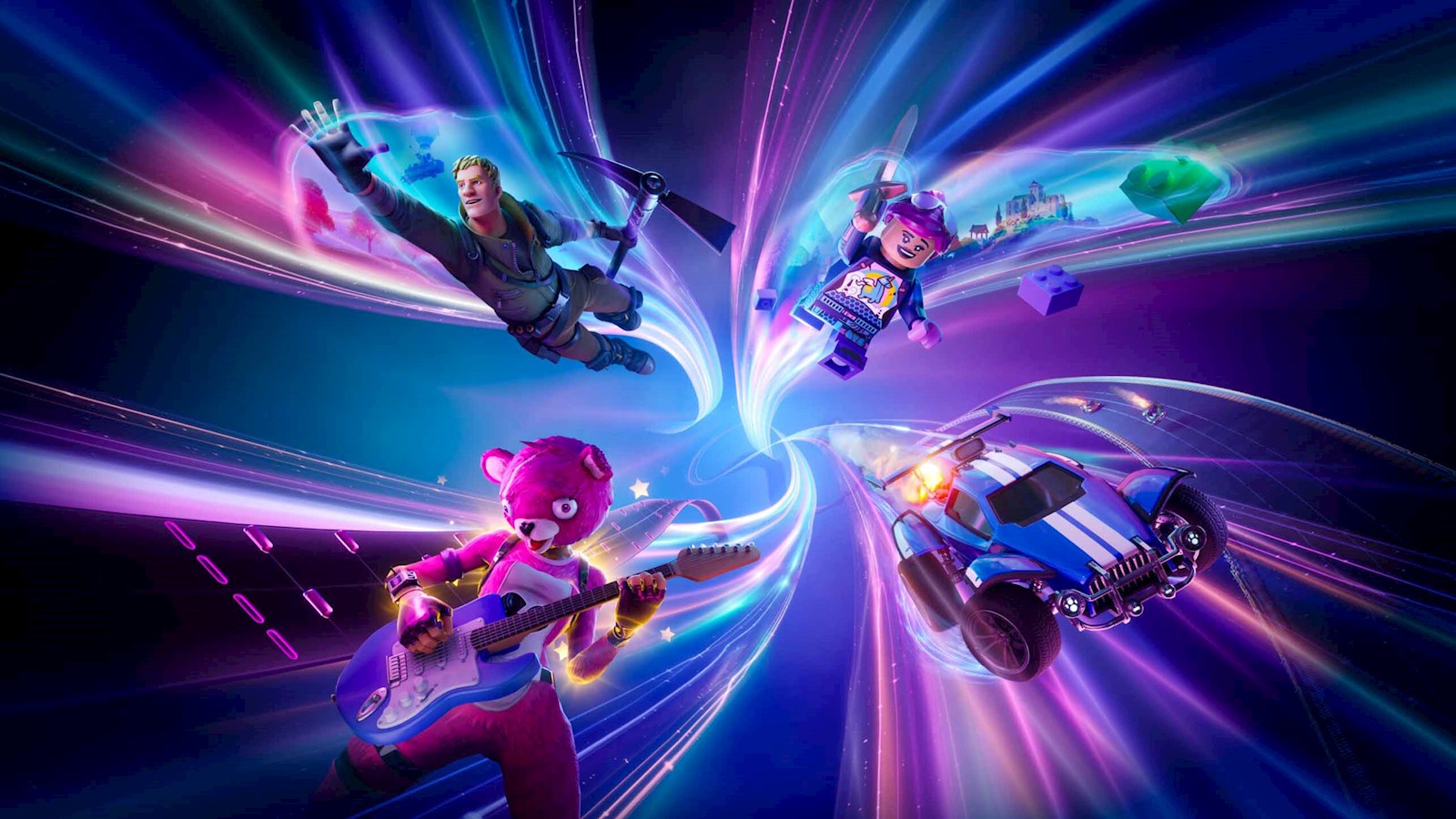
How to build your brand in-game
How brands should maximise the gaming ecosystem to build connections with youth audiences is set out in a new research report from WPP and SuperAwesome
A new study from WPP and SuperAwesome – Leveraging Gaming for Brand Affinity – seeks to understand how brands should show up in and around the metaverse, with Fortnite as a reference point. We identified the impact of in-game Fortnite activations on a brand’s cultural relevance and affinity with youth audiences.
This was a comprehensive mixed methodology study conducted in 2023 by MarketCast on behalf of SuperAwesome and WPP with research across four markets (the UK, US, Germany and France) including social listening, qualitative research (UK/US) and a quantitative survey covering more than 3,200 16-24 year olds.
How to win
“What’s important is combining two things for the benefit of clients. The first is the broadest possible range of engagement solutions, and the second is powering those solutions with intelligence and insight,” says Nick Walters, President and Chief Strategy Officer at SuperAwesome. “If you don't have the right intelligence to power your engagement, your engagement can be less effective.”
He says that SuperAwesome was an early enabler of brands achieving their goals in the metaverse but "notes that the space has been under examined thus far". And yet, so much has happened over the last three or four years during which the foundations of the metaverse were built. It was time to nail down the evidence.
“This piece of research is very helpful in building our model in terms of our offer in 3D gaming environments,” Walters says. It’s also useful for brands seeking to understand why what they have been doing in-game works and for those who are new to brand-building in-game, what is possible and how to achieve it. The research is, in effect, a playbook for brands on how to go about building impactful engagements in the gaming ecosystem.
Pete Basgen, Head of Gaming and Esports at WPP’s Wavemaker, says: “In 2024, brands are more welcomed than ever within the gaming ecosystem but it’s vital that advertisers continue to innovate and bring value to the space.”
Bagsen adds: “When working with our clients on gaming strategies, we are mindful that the gaming audience is one of the world’s savviest. The unmatched level of engagement can be a double-edged sword: brands that approach gaming authentically will be rewarded. Having this research as a playbook will be valuable.”
Sam Clough, Global Strategic Insight Director at SuperAwesome, reiterates that this research uses Fortnite as a jumping off point. “We wanted to understand what these types of 3D gaming environments contribute to brand affinity, how far that stretches and how you make the most of it as a brand,” she says.
The halo effect of branded gaming activations
The report demonstrates that the ‘Fortnite Factor’ is real. We saw a 55% increase in brand love from Fortnite players (and 38% from non-Fortnite players). At every stage of the research, evidence showed that brands that activate in the Fortnite ecosystem benefit by association, including proof of positive brand affinity. This is also true for other gaming platforms.
For young audiences, in-game activations are the best way to create engaging, sticky and memorable experiences that are viewed as so much more than advertising, and Fortnite is the best environment in which to do so.
“I thought it was fascinating to see the different objectives reached by different types of activation in Fortnite,” says Walters. “It was also fascinating to see the greater impact of in-game activations on girls, in particular. It redefines the cliché of what a gamer is. Brands can now see that games can be an incredibly powerful space in which to reach a female audience.”
Clough picks up on the halo effect. “We knew that activating in Fortnite works really well with all players, but it was the ripple effect on lapsed players and non-players that was fantastic to see,” she says.
She also points to how important it is for brands to amplify their activation in-brand. “If you don't amplify and gamers either don't know it's there or don't know how to get to the game, that’s money poorly spent,” she adds.
The report points out that savvy brands can turn the gaming experience into a content engine. “Word of mouth is definitely the best way to make discoveries. If you’re part of that communications engine, you are part of a virtuous circle of communication,” says Clough.
Gaming as a part of a broader ecosystem
For brands who are active in this space, it has never been a question of their gaming strategy existing outside their other consumer touchpoints. Developing gaming activations and experiences is part of a broader ecosystem of brand building and awareness, and this is critical for brands wishing to reach young consumers.
Walters says: “You don't ask a client what their gaming strategy is in the same way that you don't ask what their internet strategy is. No one has one internet strategy. You have multiple levels of strategies. You have a social media strategy, you have a CRM strategy, you have ecommerce strategy, a performance marketing strategy, and they're all internet strategies.”
Similarly, within gaming, there are all sorts of different things a brand can do. Walters says: “You can build awareness, you can seek to deliver your product in-game, or you can build these very rich, immersive experiences. We're trying to establish ways of thinking about what platforms and what types of activations serve what purpose, and we’re looking at how brands can best use those different parts of their funnel.”
Clough concurs, adding: “One of the things that the research threw up was not just the fact that there’s a halo effect on in-game brand-building and that it permeates well beyond the actual player, it also threw up the importance of having a complete ecosystem strategy. So, it’s no good having just a gaming strategy and building an amazing game. You need to have the right amplification around it to drive people to the game.”
Partnering for success
SuperAwesome has been a partner to WPP for the last four years. The partnership was announced in 2020 with the goal of advancing the standards for privacy for youth audiences, later playing a crucial role within WPP’s partnership with Epic Games.
WPP has worked with SuperAwesome alongside a number of teams and clients to ensure brands have the right foundation to build engaging, safe and compliant activations within gaming ecosystems. In producing this new research both companies hope to provide an actionable framework for brands looking to understand the effects of gaming activations and a roadmap for how to approach the space.
For access to the full report please visit Leveraging Gaming for Brand Affinity. For any questions about the partnership, please contact Giuliana Coli.
published on
25 April 2024
Category
More in Technology & data

WPP puts itself at the heart of collaborative 3D worlds
Pixar's 3D animation file format – USD – is the invisible building block of our digital 3D future.

A clarion call for AI, accessibility & advertising
Innovating at the intersection of AI, accessibility, and advertising

